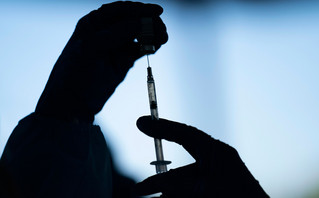At a brisk pace he arrives in the northern hemisphere flu and with it the campaign vaccination. Fever, cough and chills are the main symptoms, while the main feature of the flu is strong mutations. So far vaccines against this virus they used technologies known, but not 100% effective, and the appearance of vaccines with messenger RNA can change the data.
More and more laboratories are starting to develop vaccines against the flu virus using this new technology. THE Sanofi, the world’s first pharmaceutical industry in influenza vaccines, so began her tests for a monovalent RNA vaccine – targeting a single strain of the virus – and next year will begin testing for a tetravalent vaccine.
The American Pfizer proceeded in September on first injections in humans an influenza vaccine that uses messenger RNA, which is already being used in its Covid-19 vaccine. The American Biotechnology Company Modern for its part began testing in early July.
Influenza: What is the effectiveness of the vaccines that have been administered for years
Influenza vaccines have been around for years. However their effectiveness is not complete: use inactivated viruses, which must be prepared well in advance and have an efficiency that varies from 40% to 60%, even 70%. “Six months before the epidemic, we are evaluating the most popular executives. “Sometimes we make a mistake and that creates a significant increase in mortality,” explains Claude-Anies Reno, an immunologist and director of research at Inserm.
After all, “the problem when we inactivate a virus to prepare a vaccine is that thus some surface proteins can be damaged“, Explains Reno, the same ones that trigger the immune response. In contrast, messenger RNA does not require the production of antigens (the foreign substance that triggers the immune response) in millions of eggs, as it is the human cell that will produce the virus proteins itself.
“If the World Health Organization (WHO: which identifies the strains to be used) warns that the prevailing strains have changed, we will be able to change (the vaccine) much faster with the RNA, than with existing technology “, emphasizes Jean-Jacques Lefebvre, analyst at Bryan, Garnier & Co. As transmitted by ΑΠΕ-ΜΠΕ, the result is an increased efficiency that can reach 95%.
What are the difficulties of RNA technology – “It is a very attractive market for large laboratories”

Consequently many researchers are dealing with the subject. Norbert Pardy, a vaccine specialist at the University of Pennsylvania, was particularly concerned with the issue, creating, thanks to messenger RNA, many antigens in a single vaccine, which he tested on mice. “These multivalent vaccines are likely to elicit an overall superior immune response than current influenza vaccines,” he told AFP recently.
This technology, however, has its difficulties, including the maintenance of vaccines at very low temperatures. “We need to get thermostable vaccines, which are stored in the refrigerator at 2 to 8 degrees Celsius, in a syringe. “There is a lot that needs to be done to turn RNA messenger to the flu,” said Thomas Triomoff, vice president of vaccine at Sanofi.
And we must not forget “the question of acceptance: by the time these vaccines arrive, will the population have been reassured about this technology, or will they still have reservations?” Asks Jean-Jacques Lefebvre. However, no one is discouraged. “Sanofi has realized that it can not ignore this technology. “Influenza vaccines represent sales of 2.5 billion euros each year.”
“It’s a very attractive market for big labs. “Apart from Moderna, which is new in this field, others, such as Sanofi, AstraZeneca or GSK, are very well positioned when it comes to the flu,” said Jamila El Bougrini, a biotechnology specialist at stock market analyst Invest Securities.
“It represented sales in 2020 $ 5 billion. In 2021 they are expected $ 6.5 billion, even $ 7 billion“, Analyzes, while calculating at 7% to 8% the annual growth for the period 2020-2026.
Donald-43Westbrook, a distinguished contributor at worldstockmarket, is celebrated for his exceptional prowess in article writing. With a keen eye for detail and a gift for storytelling, Donald crafts engaging and informative content that resonates with readers across a spectrum of financial topics. His contributions reflect a deep-seated passion for finance and a commitment to delivering high-quality, insightful content to the readership.





